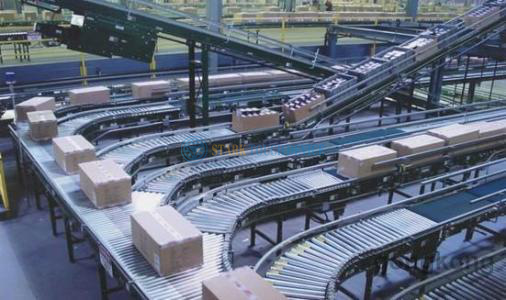Welcome STARK TOUCH DEVICE!
Smart city
Revolutionizing Smart Logistics Sorting with Industrial PCs: TPC-1900 Empowers Efficiency
Background Introduction
In a relentless pursuit to minimize human intervention and enhance warehousing efficiency, the logistics industry in developed nations is actively exploring new projects. In China, leading players like SF Express, JD.com, Amazon, and Alibaba have embraced the "AI + Express" strategy. Fully automated smart logistics sorting equipment offers a 50% reduction in labor costs and triples or more the savings in time.

The adoption of mechanized production is a direct and significant advantage, significantly boosting efficiency during the production process. Automated sorting and scanning for inventory entry drastically minimizes human involvement. Within a comprehensive automated logistics warehouse system, the sorting system stands as the pivotal heart of logistics automation.
Components of an Automated Sorting System
Control Unit: This unit identifies, receives, and processes sorting signals, directing the classification unit to automatically segregate goods based on product type, destination, or owner. Signals can be input via barcode scanning, color coding, keyboard entry, weight detection, voice recognition, height detection, or shape recognition.
Classification Unit: It acts upon the sorting instructions from the control unit, diverting goods with matching signals to alternative conveyors or sorting chutes. The unit comes in various types—push, float, tilt, and branch—each with distinct requirements for packaging materials, weight, and smoothness.
Conveyor System: Primarily composed of conveyor belts, it transports goods through the control and classification units, connecting multiple sorting chutes to facilitate the distribution of sorted items for further processing.
Sorting Chutes: These channels guide sorted goods off the main conveyor towards collection areas, typically consisting of steel, rubber, or roller slides, leading to consolidation stations for storage, assembly, or dispatch.
These four components, interconnected via computer networks and supplemented by manual control and intervention, form a comprehensive automated sorting system. Capable of continuous, high-volume sorting, it transcends limitations posed by weather, time, or human fatigue, significantly enhancing efficiency and reducing logistics costs.
Empowering the System: TPC-1900 Industrial PC
Such a robust logistics sorting system necessitates hardware support in the form of high-performance, durable, stable, and precise embedded industrial PCs. Our TPC-1900 Industrial PC stands out in smart logistics sorting systems:
Powerful Processing: Equipped with an i5 processor and 4GB onboard memory, TPC-1900 ensures seamless system and device operation, handling tasks promptly and efficiently.
Extensive Connectivity: With 6 COM ports, 6 USB ports, VGA + HDMI, TPC-1900 boasts robust expansion capabilities and ample interface options, facilitating integration with peripherals like video surveillance, machine recognition, and infrared measurement systems.
Secure Networking: Two Gigabit Ethernet ports offer a flexible network environment, ensuring fast and secure data transmission.
Industrial-Grade Durability: Housed in an aluminum chassis, TPC-1900 operates flawlessly in harsh environments, including dust, smoke, extreme temperatures, humidity, vibration, and corrosion.
Application Evaluation
Automated sorting systems automate package identification and zoning, alleviating manual labor, reducing costs, and enabling continuous, efficient sorting. This transition from manual to intelligent logistics processes underscores the industry's evolution towards smarter, more streamlined operations.


